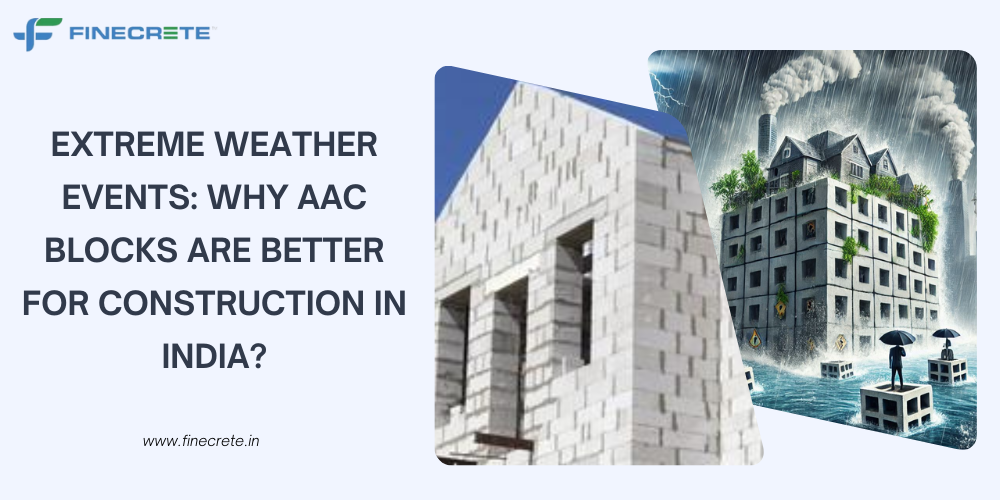It is a fact that extreme weather events are more common today than they were even two decades back. Only in the first nine months of 2024, such events have occurred on 93% of the days. These have led to the loss of lives, property, and crops across the country. AAC blocks are being regarded as a viable solution to these problems. Find out why these can be better for modern Indian construction projects.
- Exceptional thermal insulation
AAC blocks come with superior thermal insulation. These help to maintain consistent indoor temperatures during extreme heat or cold.
Due to porous structure, these can reduce heat transfer, minimizing the impact of scorching summers or freezing winters on indoor spaces. It improves occupant comfort and also reduces energy consumption, making them ideal for regions with fluctuating weather.
- Resistant to flood damage
Flooding is a recurring threat in India during monsoons. AAC blocks are highly water-resistant and absorb minimal moisture compared to traditional clay bricks. These can withstand prolonged exposure to water, which reduces the risk of structural degradation, mold formation, and dampness, making buildings last longer in flood-prone areas.
- Lightweight and earthquake-resilient
India is no stranger to seismic activity, with many regions categorized as high-risk zones. The lightweight nature of AAC blocks reduces the overall dead load on buildings. It makes structures more earthquake-resilient.
Due to flexibility and ability to absorb seismic shocks, these offer an added layer of safety during earthquakes. This makes them a preferred choice in disaster-prone regions.
- Fire-resistance
Fires are a devastating consequence of extreme weather, often exacerbated by high temperatures and droughts. AAC blocks are non-combustible and ensure excellent fire resistance, withstanding temperatures up to 1,200°C.
Naturally, these improve safety for occupants and can minimize fire-related property damage, particularly in areas prone to wildfires or industrial hazards.
- Superior wind-resistance
Cyclones and high-speed winds wreak havoc on poorly constructed buildings. Strong and durable, AAC blocks have better resistance to wind pressure and the impact of debris, as compared to traditional materials. These ensure robust construction. Keeping walls intact during severe storms, helps reduce the risk of structural collapse.
- Eco-friendly and sustainable
AAC blocks are manufactured with eco-friendly processes and materials, such as fly ash – a byproduct of thermal power plants. Their production involves minimal energy consumption and generates low carbon emissions.
In the face of climate change and its role in extreme weather events, using AAC blocks contributes to sustainable construction practices. These align with global and national environmental objectives.
- Cost-effective solution for weather-resilient structures
While extreme weather demands robust building materials, affordability remains a crucial consideration. AAC blocks strike a balance between cost and performance, offering long-term savings through reduced maintenance and energy costs. Due to versatility and efficiency, these have become a cost-effective choice for building weather-resilient structures, particularly in economically vulnerable areas.
As climate unpredictability continues and extreme weather events seem to be on the rise, AAC blocks can play a key role in weather-proofing infrastructure and safeguarding lives and livelihoods.






